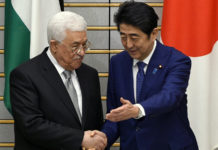Are we really seeing the rise of a ‘new jihad’?
Samantha May, University of Aberdeen
In a BBC interview just after the recent Manchester suicide bombing, French scholar Gilles Kepel offered a three-stage chronology of the development “jihadi” activism. The first stage he identified emerged in 1979, around the time of the Iranian revolution, and failed to mobilise the pious masses. It was followed, he says, by a second stage, largely defined by the notorious acts of al-Qaeda. ![]()
Now, Kepel’s analysis goes, we are living in a third stage, one that began in the mid-2000s with the 2004 publication of Abu Musab al-Suri’s The Global Islamic Resistance Call. Al-Suri’s writings point to many of the distinctive organisational and strategic features of recent attacks in Europe and elsewhere, in particular the “individual jihadi” – commonly referred to in the media as the “lone wolf”.
So is this really the rise of an altogether new type of extremist threat – or is it simply a phase in a much longer trajectory?
There are some misconceptions and conceptual problems that must be cleared up here, not least the inappropriate use of the term “jihadi”. To continually describe groups such as al-Qaeda and the so-called Islamic State (IS) as “jihadis” is to grant them Islamic legitimacy, something the vast majority of Muslims around the world deny them.
In theological terms, jihad literally means “struggle” in the path of God. The “greater” jihad is the struggle to be a good Muslim, as enacted everyday by the millions of pious Muslims across the globe in acts such as getting out of bed for prayers at dawn and fasting during the holy month of Ramadan. The “lesser” jihad, meanwhile, is armed struggle in the way of Allah.
Yes, specific movements have reinterpreted concepts of jihad for their own temporal needs. But to understand this is to acknowledge that there are no definite beginnings or ends to the vague concept of a jihadi “mission” – there are only constantly evolving practices, strategies and understandings.
This is where Kepel’s chronology runs into trouble. His overall analysis isn’t entirely without merit, but using such strict categories is a serious simplification. By conflating all violent Islamist action into three discrete phases, Kepel risks reducing all violent action during these periods into a single monolithic “jihadi movement” that simply does not exist.
DIY terrorism
The world is host to a wide array of violent Islamist movements with differing ideologies, aims and tactics. They cannot be taken as a single phenomenon – the very public ideological battles between contemporary al-Qaeda and IS being a telling point.
Where violent strategies differ, they do so less by virtue ideological reasoning and more in reflection of a group’s political pragmatism and real capabilities (or lack thereof). That the terrain of Islamist violence is constantly shifting says plenty about these groups’ past failures, but offers little with which to predict future successes. What we can identify is the rise of a very particular idea: that it’s an individual’s duty to engage in violence.
This began in the 1980s, influenced by the 13th-century fatwas of theologian Ibn Tamiyya and reinterpreted Islamic concepts from Egyptian fundamentalist scholar Sayyid Qutb. The idea of individual duty was expounded by Palestinian fighter Abdullah Azzam, commonly considered the mentor of Osama bin Laden, in his 1984 declaration Defence of Muslim Lands, which clearly outlines jihad as an individual obligation.
It also comes up in The Absent Obligation, a much-overlooked 2000 work by Muhammad Abd al-Salam Faraj of the Egyptian Islamic Jihad movement. It argues that the “lesser” armed jihad should be elevated to the status of a sixth pillar of Islam and become a duty for all Muslims.
The idea that violence is justified as the duty of individuals has proved to be an invaluable recruiting tool. For years now, it has been attracting fighters from across the globe to places as diverse as Afghanistan, Bosnia, Chechnya and elsewhere. In this sense, then, the individualistic “jihadi” strategies and practices on display in recent attacks in Europe are far from new.
What is in fact new about this violence is the terrain on which it is now being incubated and unleashed.
Breaking up
Europe is witnessing a worrying surge in acts of violence perpetrated not by “aliens” or foreigners, but by its own citizens. As the story of the Manchester bomber also demonstrates, the “training grounds” for such attackers are also shifting – in this case, to Libya, which remains a violent and weakly governed state with ample space for violent extremist groups. It’s a perfect place for even a tiny number of potential terrorists to gain experience with whatever forms of violence and weaponry are on offer.
But again, this is not new. Various Islamist movements over the years have learnt from previous groups’ failures to protect themselves and have survived by aborting centralised hierarchical structures and opting to work in “cells” with little or no direct contact to a central organisation. Al-Suri seized on the strategic potential of this approach:
These spontaneous operations performed by individuals and cells here and there over the whole world, without connection between them, have put the local and international intelligence apparatus in a state of confusion, as arresting the [members] of aborted cells does not influence the operational activities of others who are not connected to them.
If this is indeed the principal strategy behind the various violent, extremism-motivated actions taking place in Europe, then the continents’ security services should know not to look for centralised command structures which simply won’t exist. And if radical Islamist terrorism really is moving in this direction, that poses a problem to Kepel’s assertion that “jihad fatigue” is setting in. As new terrains and individuals emerge to incubate and cause havoc, the concepts they use and the actions they take will keep evolving – as they have done for decades now.
Samantha May, Research Fellow, International Relations, University of Aberdeen
This article was originally published on The Conversation. Read the original article.







![file-20170526-6389-1b25laj[1]](http://meccapost.com/wp-content/uploads/2017/05/file-20170526-6389-1b25laj1.jpg)

